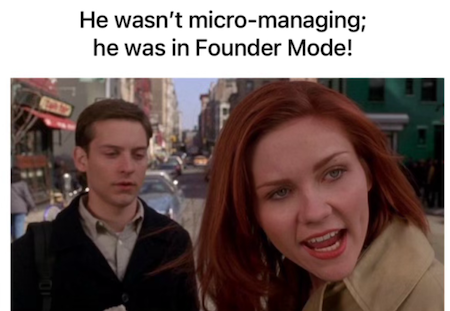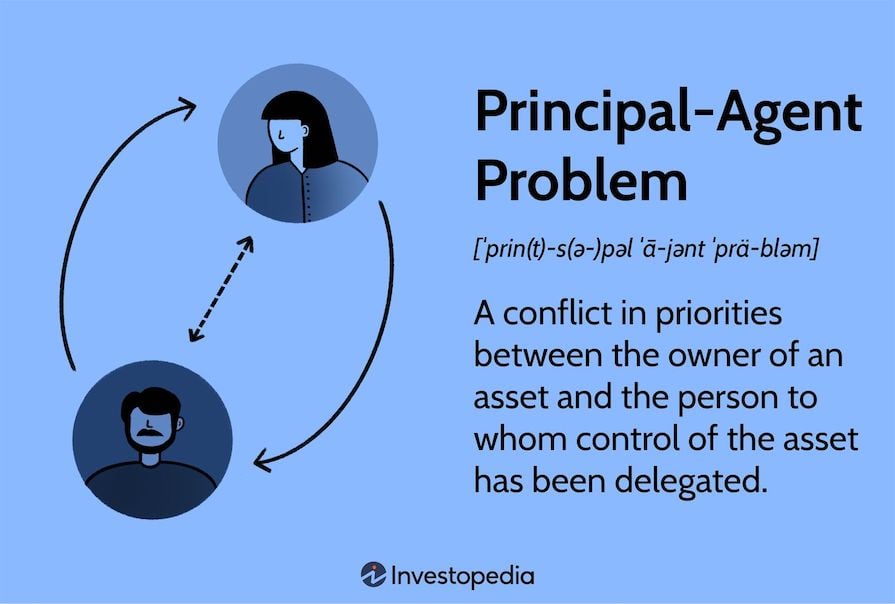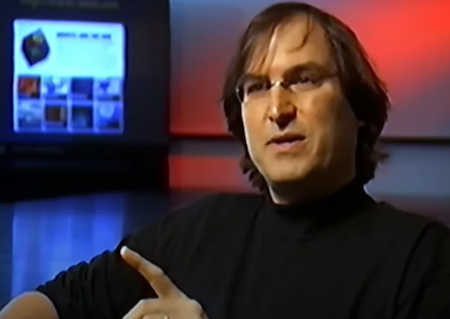By now, you’ve probably read the post that Paul Graham, co-founder of Y Combinator, recently published about ‘founder mode.’ The premise of Paul’s viral post is that ‘founder mode’ is the right way to run a company, and will work better than ‘manager mode’ — at least, when it’s done correctly, and once we figure out exactly what that entails.

Paul wrote his post based on a talk that Brian Chesky, CEO of Airbnb, gave to a room full of current and former startup founders at a recent YC talk. The founders appeared to agree with Chesky’s arguments. In a recent podcast episode, Chesky retold his story of going ‘founder mode’:
“I totally changed how I ran the company. I used to be very hands off. I democratized data. I was very much reactive and I thought my job was strategy and capital allocation. But here’s the weird thing: the less hands on I was, the more I got sucked into problems. By the time I got sucked into a problem, it was 10x the amount of work.
Then I decided to do something different. We’re going to be totally integrated. One roadmap. I am going to be involved in every single detail. Airbnb is not going to do anything more than I can personally focus on. This is what Steve did at Apple.”
Chesky and Graham caused quite a stir in the community, leaving a lot of people wondering what founder mode really means. Is it a management style? This sounds like micromanagement, but is it? Is founder mode really better than manager mode?
This article aims to answer these questions and provide some insight into how product communities are talking about founder mode and what it means for product managers.
It’s common knowledge that most, if not all, founders operate differently than managers. The ownership, the intensity, and the passion of a founder is rarely matched by the people that the founder hires. We can now put a label on it called ‘founder mode.’
Graham cites the famous example of Steve Jobs’ ouster and return to Apple as a shining example of how operating like a founder, not a hired gun CEO (like John Sculley), is the key to scaling a startup. Graham also speaks about Brian Chesky’s experience at Airbnb, saying:
“As Airbnb grew, well-meaning people advised him that he had to run the company in a certain way for it to scale. Their advice could be optimistically summarized as “hire good people and give them room to do their jobs.” He followed this advice and the results were disastrous.”
Graham’s take is that the conventional advice being given to founders to hire good managers, delegate to them, and focus on managing capital is, in fact, bad advice that leads to disastrous results. The idea has spread like wildfire from Silicon Valley to the rest of the world.
Memes like the one below have made their way across X (formerly Twitter) over the last several weeks:

Product communities have had their fair share of discussions about founder mode. Many agree that founder mode can be good or bad, depending on the circumstances. Here are some interesting takes (paid subscription required in some cases) from product leaders and managers:
“In my experience working as a PM at startups, ‘Founder Mode’ is the default mode. For good and for bad” – Guy Peled
“You’re a CEO. You think, great, we’ll do that (founder mode). You think I can be involved in every decision. What happens next is the organization will pivot its cognitive effort to producing work that will get past the CEO.” – Thomas Catnach
“I’m not wholly against this [founder] mode to be honest, I really think it depends on the founder. Some founders I’ve worked with have great ideas and connections but zero product sense, they’d be awful. Other founders I’ve worked with have a product sense so strong (or luck so strong) that it humbled me.” – Thomas Catnach
“I find myself constantly repeating that empowered organizations don’t require less management, they require better management. … [do] not to confuse Founder Mode with micromanagement.” – Marty Cagan
Founder mode (AirBnB) versus Manager Mode (Uber). A reminder not to judge a leadership approach by how compelling it sounds in a tweet or blog but instead on the results produced. If Satya or Dara are ‘manager mode’ then give me manager mode any day of the week. – Dare Obasanjo
Based on the quotes above, you can see that we have two camps forming: those who are for and those who are against the idea of founder mode. Let’s explore more as to what founder mode is and how it differs from manager mode.
Founder mode as a concept has existed for some time, but the term ‘founder mode’ itself was coined in September 2024 by Paul Graham.
One PM leader-turned-advisor, Shreyas Doshi, who coaches many startup founders on product management noted that he “now has something to point to, a term created by someone with a lot of credibility.” He explained that he often coaches founders that they should not be outsourcing the job of finding product-market fit to a hired product leader/CPO.
Note that he didn’t go on to define exactly what founder mode was succinctly, though. He just said that ‘founder mode’ couldn’t be taught, while product skills like finding product-market fit can be taught. Graham himself didn’t define founder mode, either. His article only stated:
“There are as far as I know no books specifically about founder mode. Business schools don’t know it exists. All we have so far are the experiments of individual founders who’ve been figuring it out for themselves. But now that we know what we’re looking for, we can search for it.”
Here’s my take: founder mode can be described as a semi-autocratic style of leadership that focuses on a company’s vision and mission, customers, and problems being solved in the world.
Founders typically focus more on external problems facing the world as opposed to the internal problems of the companies they run. Of course, they worry about the systems, processes, and people within the company. However, they don’t establish that infrastructure for the sake of running an efficient company, but rather for the sake of the problems that they are tackling.
Founder mode is nebulous in that, sometimes, the mode of operation may mean being a micromanager, while other times, it may mean being very affiliative. It’s a form of situational leadership with an emphasis on developing other missionaries as opposed to mercenaries (something Marty Cagan has spoken about in his blog).
Manager mode, on the other hand, can be described as a laissez-faire style of leadership that focuses on delegating responsibilities and tasks through a chain of command (top to bottom) in order to achieve the company’s vision and mission, OKRs, and revenue goals.
In a ‘manager mode’ style of leadership, anything that resembles micromanagement is bad. You provide goals and tasks, then let your teams go off and figure out how to get those things accomplished. It’s decentralized, with the hope that if each goal, task, and initiative goes well, the sum will move the company towards accomplishing its mission and vision.
You can see the two modes differ significantly. Founder mode tends to be much more directive, while manager mode tends to be more delegative. In the next section, I’ll explore what I believe to be the root of these two modes and why they happen.
At the root of the founder mode vs. manager mode question is the principal-agent problem, a common area of study in economics:

The principal-agent problem highlights the conflicts of interest that arise when the principal (the founder) delegates responsibilities to the agent (the manager). The problem escalates as motivations, passions, and interests of the principal (founder) become increasingly disconnected from the agent (manager).
The founder and manager are two different people and have arrived at the same time and place under different circumstances. The list of differences between a principal (founder) and an agent (manager) goes on and on, but here are a couple of critical points to consider:
The point is that despite their best efforts, an agent is never going to behave EXACTLY like a principal. As a result, that agent (manager) will make a different set of decisions than the principal (founder) about all the activities that go on within a company — operations, processes, goals, objectives, incentives, hiring, firing, and so on and so forth.
If you sum up all these decisions across all of these activities, you then are in a situation where we are now able to highlight entirely different modes of running a company: ‘founder mode’ vs. “‘manager mode.’
Idolizing either founder mode or manager mode can be detrimental to a company. In the case of founder mode, most of the discussion often surrounds whether or not a single founder can scale themselves to be at all the right places at the right time.
It’s no wonder that Brian Chesky was being given advice to delegate. While Chesky found that his problems reduced as he became more involved, others may find themselves burning out. While Chesky has proven himself as a product and design guru, other founders may not have that same level of product sense and may not be objective.
Productboard wrote an amazing post on the dangerous animals of product management:

In many cases, though not all, these personas were created by product managers at small startups where the company still hadn’t found product-market fit. The dangerous animals represent various types of founders who lacked the product skills to take the company forward.
Many will argue that it’s important for the founder to find product-market fit before bringing on a head of product because the company is tied to their mission and vision. Outsourcing the task of finding product-market fit often results in a company’s demise.
The point here is, though, that if the founder hasn’t built the necessary product skills, execution skills, and understanding, then no amount of ‘founder mode’ magic is going to make the company successful.
Manager mode is not without its downsides. The most prominent manager mode examples that show up in the news typically come from large companies with monopolistic positions. In this timeless video, Steve Jobs goes on to say:
“And the product people get driven out of the decision making forums, and the companies forget what it means to make great products.”

Steve used several examples to highlight this “pushing product people out” phenomenon, including what happened to Apple after it hired a mature CEO, John Sculley, to run the company in 1983. John Sculley operated in manager mode, and by 1997, Apple was 90 days away from insolvency.
What happens when manager mode takes over a company is that procedures, processes, and financials get emphasized over product development, technological leadership and overall vision and mission. Manager mode’s hope is that those key activities can be delegated to other people in the organization.
Steve’s argument is that manager mode might work at CPG brands, but in the long term, will not work in a technology-focused company.
One of the great insights I walked away from this discussion with was that manager mode can be taught while founder mode cannot. If you are naturally a manager, then it is NOT recommended to attempt to go into founder mode. It will be obvious that your true passions, motivations, and incentives are misaligned with your actions.
Another aspect of the discussion that needs to be addressed is that somehow founder mode is the right way to do things while manager mode is the wrong way to do things. In other words, founder mode will lead to a focused, mission-driven company while manager mode will lead to a bureaucratic, self-absorbed company.
I would argue that there are examples (Tim Cook, Satya Nadella) who are arguably in manager mode but are leading successful companies. They are not the founders, but they were at the company when the founders were around. They still operate with a sense of ownership, accountability, and have a vision.
The key to their success seems to have been that they’ve been able to keep the company operating as if the founders were still around. Many large companies’ founders are long gone, and the data shows that those companies don’t operate as well as founder-led companies.
This recent study by Bloomberg showed the performance of 22 founder-led SP500 companies was 202 versus the performance of the rest of the SP500 was 92 (a performance of 100 equals the market). This brings us to the question, When should a CEO operate in founder mode or manager mode? There’s a few scenarios that stand out:
| Scenario | Founder mode | Manager mode |
|---|---|---|
| Startup w/ no PMF | X | |
| Startup or scale-up w/ strong PMF scaling to multiple products | X | |
| Large company, post-IPO | X | |
| Large company, being disrupted | X |
In the case of founders at startups and scale-ups, in general, the default mode is founder mode and that is for good reason.
A startup by definition, isn’t really a company yet. It’s an entity in search of a business model and product-market fit. A company in that stage needs guidance and vision. Once that company finds its product-market fit, there is a point where founders will have to delegate.
This is especially true when a company scales to multiple products. In such cases, the founder will be better off hiring a head of product to help scale the company. The key here is that the founder remains engaged and provides a set of guiding principles for their direct reports to align to. As Marty Cagan says:
“I find myself constantly repeating that empowered organizations don’t require less management, they require better management.”
When a company is being disrupted, without a doubt the CEO needs to move into founder mode and focus on the transformation. The CEO should be leading the transformation and transformations can be tricky (to put it lightly).
Zone to Win provides a great framework that tells us companies can operate productive, safe initiatives in manager mode while operating its incubation and transformation “bets” in founder mode.
Personally, I’m happy that we now have the ‘founder mode’ label to describe that semi-autocratic, visionary, and sometimes “out there” leadership style.
We should recognize that conventional management advice is probably a bit outdated. It’s clear that we wouldn’t have some of the amazing companies that we do today without founder mode.
That said, for every Airbnb & Apple (Chesky & Jobs), there are a hundred companies that were unable to make the transition back to founder mode. No one should expect instant results if they switch to founder mode. Likewise, there is a long history of companies that idolize manager mode to such a point that they can’t imagine running in founder mode, it would be too painful.
Neither of these points mean that there isn’t a place for manager mode. I believe that strong stable companies can thrive in manager mode. Within a company, the Zone to Win framework tells us that certain parts should be in founder mode (transformation) and certain parts should be in manager mode (performance, productivity).
In the end, my hope is that we are able to have open and honest dialogue about when a certain management style is or is not working.
Further reading: How should a C.E.O. operate?

LogRocket identifies friction points in the user experience so you can make informed decisions about product and design changes that must happen to hit your goals.
With LogRocket, you can understand the scope of the issues affecting your product and prioritize the changes that need to be made. LogRocket simplifies workflows by allowing Engineering, Product, UX, and Design teams to work from the same data as you, eliminating any confusion about what needs to be done.
Get your teams on the same page — try LogRocket today.

A practical five minute revenue estimation method to help product managers compare ideas, drop low impact features, and prioritize smarter.

A practical guide for PMs who want to stop being bottlenecks, delegate smarter, and lead teams effectively with a clear ownership framework.

Stop letting unreliable data block features. Treat data as inventory to track quality, ownership, and ship with confidence.

Learn why slide decks slow teams down and explore better tools like whiteboards, PRDs, and prototypes to improve collaboration and alignment.